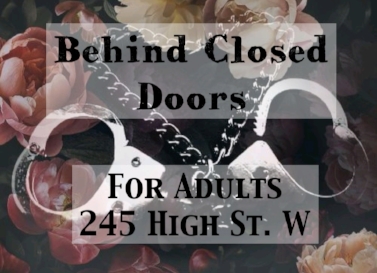Photo Radar: City Spends Over $1 Million on Traffic Safety
Robert Thomas
Despite an SGI report stating the City of Moose Jaw has spent $450,000 on Traffic Safety Initiatives from the proceeds of Photo Radar fines, the truth of the matter is that that just isn’t the reality. The fact is that the City has spent a lot more than that to make Moose Jaw's streets safer.
Recently SGI announced the Photo Speed Enforcement (PSE) or commonly referred to as Photo Radar pilot project is now permanent. A report showed PSE helped reduce speeds as well as reduce collisions, saving lives, and preventing injuries and vehicle damage in the process.
In making PSE permanent Moose Jaw will lose some of the funding they receive from the speed cameras as some funds will be used in other communities for Traffic Safety Initiatives. The Province will continue to receive 25 percent of fines into the General Revenue Fund as it did in the pilot program.
SEE RELATED – MLA Michelson Answers to Photo Radar Controversy
All funds generated by Photo Radar are supposed to go to Traffic Safety Initiatives. In Moose Jaw, PSE resulted in fines of $2,358,359 with expenses of $1,263,267 or a net revenue gain of $1,085,192.
In numbers provided by the City, there was actually $1,805,592 spent on qualifying Traffic Safety Initiatives from 2016-2018.
The enhancements are as follows:
2016:
> Traffic Safety Enhancement Program - Police Service $90,000
2017:
> Traffic Safety Initiatives Operating Budget (Traffic counts, Traffic & Street Signs, Traffic Lines) $172,505
> Traffic Safety Enhancement Program - Police Service $50,000
> Traffic Light Upgrades - $330,000
2018:
> Traffic Safety Enhancement Program - Police Service $70,000
> Traffic Safety Capital Budget (Road Rehab, Traffic Control Upgrades) $1,093,087
In an email response SGI said that the definition of a Traffic Safety Initiative is broad.
“The scope of what is considered a traffic safety initiative is quite broad. It could be an engineering initiative, an enforcement initiative, an educational initiative or a technological initiative, as long as it will have a positive impact on harm (property damage, injuries and/or fatalities) that result from road crashes. All ideas that align with this goal are welcome,” SGI responded.
SGI acknowledged the City had indeed completed Traffic Safety Initiatives in compliance with the fund's guidelines.
In response to questions about the apparent discrepancy between the City's and SGI's figures, Communications Director Craig Hemingway said the City has communicated the updated figures; SGI and the Crown corporation has confirmed it.
“No, that paragraph includes photo speed enforcement-funded traffic safety initiatives by municipalities spent that had been communicated to SGI or were known at the time that section of the report was authored. We do not dispute the updated information the City of Moose Jaw provided to you,” SGI responded.
Asked to provide a definition of what a Traffic Safety Initiative is Hemingway wrote “Engineering would define a traffic safety initiative as work that improves the safety of an intersection (fewer accidents/injuries)."
Asked if a recent Council debate regarding finding funds to upgrade the intersections of 1st Ave NW and Caribou St. W as well as 9th Ave NW and Lillooet Street West were examples of where Photo Radar fines could be used to fix the problems, Hemingway responded that yes, if funds are available they could be used there. Other intersections have benefited from Photo Radar fines.
“Part of previous funding has been used to upgrade outdated controllers.”
SEE RELATED: Council Quarrels Over Crossing Signs
Uncertainty of future Photo Radar fines because of program changes leaves the City not knowing what any future funds could be used for.
“At this time it is unclear if there will be additional revenue to the city as a result of changes to be program.
The city has a list of priorities based on the number and severity of accidents to be addressed through the capital budget. Any additional revenue could advance addressing these priorities,” Hemingway wrote.
It should be noted that at a previous Council meeting, when speaking about a Saskatchewan Cities Mayors' Conference, Mayor Frasier Tolmie highlighted the proposed changes in his report stating that it’s something which needs to be discussed at budget time.
Asked what the proposed changes on how the fine revenue is allocated would mean to the City, Hemingway responded that a predicted drop in funds would effect future Traffic Safety Initiatives.
“It appears that the city will receive less funding; specifics are not clear at this time. It would mean less overall funding for traffic safety,” Hemingway wrote.
Asked if the City had expressed any concerns to the Province about the fairness of sending funding from Photo Radar fines to other communities, Hemingway responded that the City had done that.
Regarding some concerns raised about Photo Radar fines becoming a cash cow or a form of taxation Hemingway said that that was not true; it is solely a means to make roads safer.
“The focus of the program is about improving safety,” he wrote.
Others in the community have also expressed support for the program due to it helping improve safety.
At the present time the Photo Radar Traffic Safety Initiative reserve fund has been depleted as it’s been spent on qualifying improvements.


